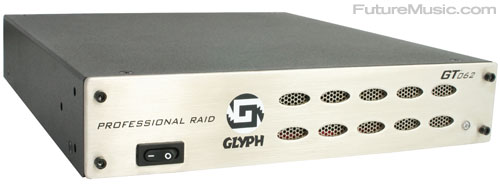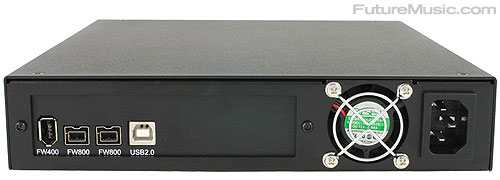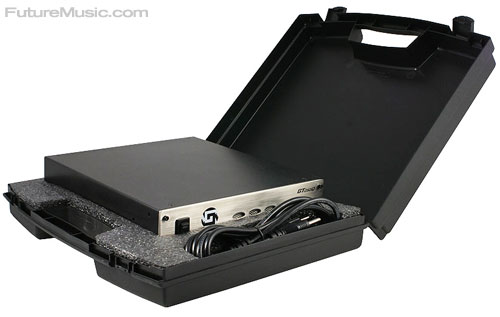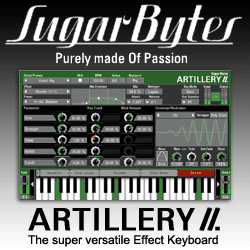|
|
|
|
|
|
|
|
|
|
|
|
|
||||||||||||||||||
|
|
|||||||||||||||||||
|
|
|
|
|
April 11, 2008 ../ TestDrive: Glyph GT 062 Hard DriveJust when you're putting the finishing touches on your next masterpiece that's going to make Madonna take notice and come begging for your production services, your hard drive decides to take a dirt nap. Nooooo! Why me??
 After the umpteenth drive of ours decided to wet its bed, we contacted Glyph. Glyph has been around for 15 years providing hard drive solutions for the audio and video markets, and they claim that not only are their hard drives more reliable than their competitors, but they also put their money where their mouth is by backing it up with a device replacement and data recovery policy.
Features:
If your drive bites the dust for whatever reason within the first year, Glyph will replace the drive (usually within 48 hours) and rescue your data for free, if possible. In the second year of warranty, Glyph will fix or replace your the drive at their discretion, and recover your data for free, if possible. In the third and final year of the warranty, Glyph will fix or replace the drive at their discretion, and offer to rescue your data for a fee. The warranty is limited to the original owner, and replacement drives are often refurbished models, but this is currently the longest and most extensive warranty in the business. Glyph sent us their 1TB GT 062 for our evaluation and we tested it over a period of three months in a variety of rough environments and stressful workloads. The first thing we noticed when unpacking the GT 062 is its robust all-metal chassis, and heft. The housing utilizes thick, strong metal, with an attractive stainless-steel face-plate. The IEC power supply is located inside the unit, and certainly contributes to its prodigious weight, but that's a small price to pay for not only having to drag an external wall-wart from location to location, but also actually remembering to pack it.
The GT 062 houses dual 7200 RPM Seagate SATA drives with a 16MB cache and a 80 MB/sec sustained transfer rate. Glyph also employs an Oxford Semiconductor 924 bridging chip, which is found in many higher-end drives. The bridging chip performs the vital task of integrating the Seagate drives with the FireWire, USB, eSATA protocols. Based on our research, the failure of a bridging chip is often the culprit in drive troubles. So before you decide that your external drive has bitten the dust, and should be launched off the highest pinnacle you can find, it may be wise to investigate the bridging chip.
Glyph noted to us that many drives with fans donXt even sport air intakes, making the inclusion of a fan a complete waste. It's a valid point, and something that most users, and apparently several drive manufacturers, donXt even think about. So if you're shopping for a drive, it's definitely an item that should be on your feature list. However, most high-end drives do have intake ports, albeit not nearly as sexy, or as extensive as the GlyphXs Captain Nemo inspired design. The 062 can be formatted in one of four options, RAID 0, RAID 1, JBOD, and Spanning depending on your needs. The included Glyph Manager software utility for both Mac OS X and Windows XP/Vista allows you to set up the GT 062 in one of the four aforementioned drive modes very easily. It then runs in the background monitoring the health of the drive, and lets you know instantly if there's any problems. We didn't notice any system lag, while running the utility under Mac OS X.
Four Drive ModesRAID 0 Mode - Striping: The two drives are seen as one large drive, and reading/writing occurs on both drives simultaneously. It is designed to increase the performance and data throughput of the drive system. The built in RAID 0 controller splits each piece of data across both of the drives in segments and distributes the I/O burden. Since data is written without any form of parity data-checking, it allows for the fastest data transfer of all the RAID levels.The downside is that if one drive becomes damaged, the whole array can become corrupted. RAID 0 is not redundant or fault tolerant like RAID levels 1, 3, and 5, but the trade off is speed; RAID 0 is the fastest of all RAID levels. RAID 0 applications include: video editing, where the speed of one drive is simply not high enough to support the bandwidth of the video stream. Two drives together can handle a single stream of uncompressed SD 8 or 10-bit, and multiple streams of DVCPRO HD, HDV and DV25. Sample libraries that stream off of the drives benefit from the speed, such as BFD and Synthogy Ivory. Read speeds in RAID 0 mode are in the range of 70-75MB/sec, and they stay high as the drive's capacity increases and becomes more fragmented. The read speeds of single drives slow down tremendously as they fill up with data.
It basically means that your disk can survive a drive failure and still have your data. When configured in RAID 1 mode, Glyph Manager constantly monitors the health of the drives. When a problem is detected, Glyph Manager alerts the user by animating in the Mac OS X dock or displaying an error balloon from the Windows System Tray. Data can then be backed up before any is lost due to drive failure. As for performance, RAID 1 Mode typically has slower write speeds because the controller has to author both disks simultaneously. JBOD Mode: JBOD is an acronym for Just a Bunch of Disks, meaning the dual drives will be seen as two independent drives. Each drive will be seen with their actual capacity, so a 1TB GT 062 will be seen as two 500GB drives. Think of this as if the 062 was just housing two separate drives. Applications for JBOD mode are usually audio production, since the highest track count / write performance can be achieved with this mode. Another benefit is that if one drive fails, it will not affect the health of the second. Spanning Mode: The two drives are seen as one large drive and data is written sequentially across them. When the first drive fills to the limit, data is then written to the second drive. This mode is useful for applications requiring large volumes, but not requiring the speed of RAID 0. Spanning does not provide any performance or redundancy benefits.
Testing & PerformanceEven during some of our longest sessions with the 062, we never found that the drive experienced heat build-up issues, despite the heavy enclosure and internal power supply. However, the drive is not exactly silent, especially when booting up, so it is advised to place the 062 in a well-ventilated, yet sonically shielded, area of your studio.
 Over the course of our evaluation, we tested the drive in both multitrack audio sessions and computer video editing. Both situations tend to separate the men from the boys in the drive business, and we found the Glyph performed flawlessly with no write errors. We tested the Glyph simultaneously recording sixteen tracks at 24 bit / 95 kHz resolution and didn't encounter a single glitch, hiccup or dropout. Glyph documented their own tests, so if your multitrack requirements are more extensive, then you can review their data. The GT 062 can be rack-mounted with GlyphXs single or dual rack kit, which are sold separately. The dual kit allows two units to be racked side by side in a 1U rack and is quite convenient if you have several drives, but you may want to evaluate that the drives are getting the cooling ventilation they desire.
ConclusionWith the plethora of external hard-drive options on the market, we found it fascinating that only one company truly stands behind their product. The reality with hard-drives is not if they will fail, but when. Most drives are only rated for three years of reliable operation, after that you can only hope for the best. Kind of like NASA's Voyager missionsXor the Mars Rover. With such a comprehensive warranty, Glyph's drives need to perform, or they'll be quickly out of business. Good thing for them and us, they do. If youXre looking for a solid, reliable hard drive solution for your audio and video projects, then there's only one name to consider, Glyph Technologies.The Future: Glyph still has some work to do on the noise level of the eternal fan.
Glyph Technologies GT 062 (1TB) retails for $959. More information on the Glyph Technologies GT 062.>>> Back to Digihear?
Copyright © 2008 FUTUREMUSIC® All Rights Reserved. |
|
|
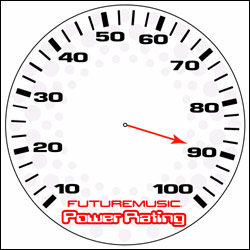 With the introduction of the GT 062, Glyph Technologies further distances themselves from the competition with a world-class warranty, professional-grade components and an innate understanding of their customers.
|
|
|
|
|
|
|
|
|
|
|
|
|






